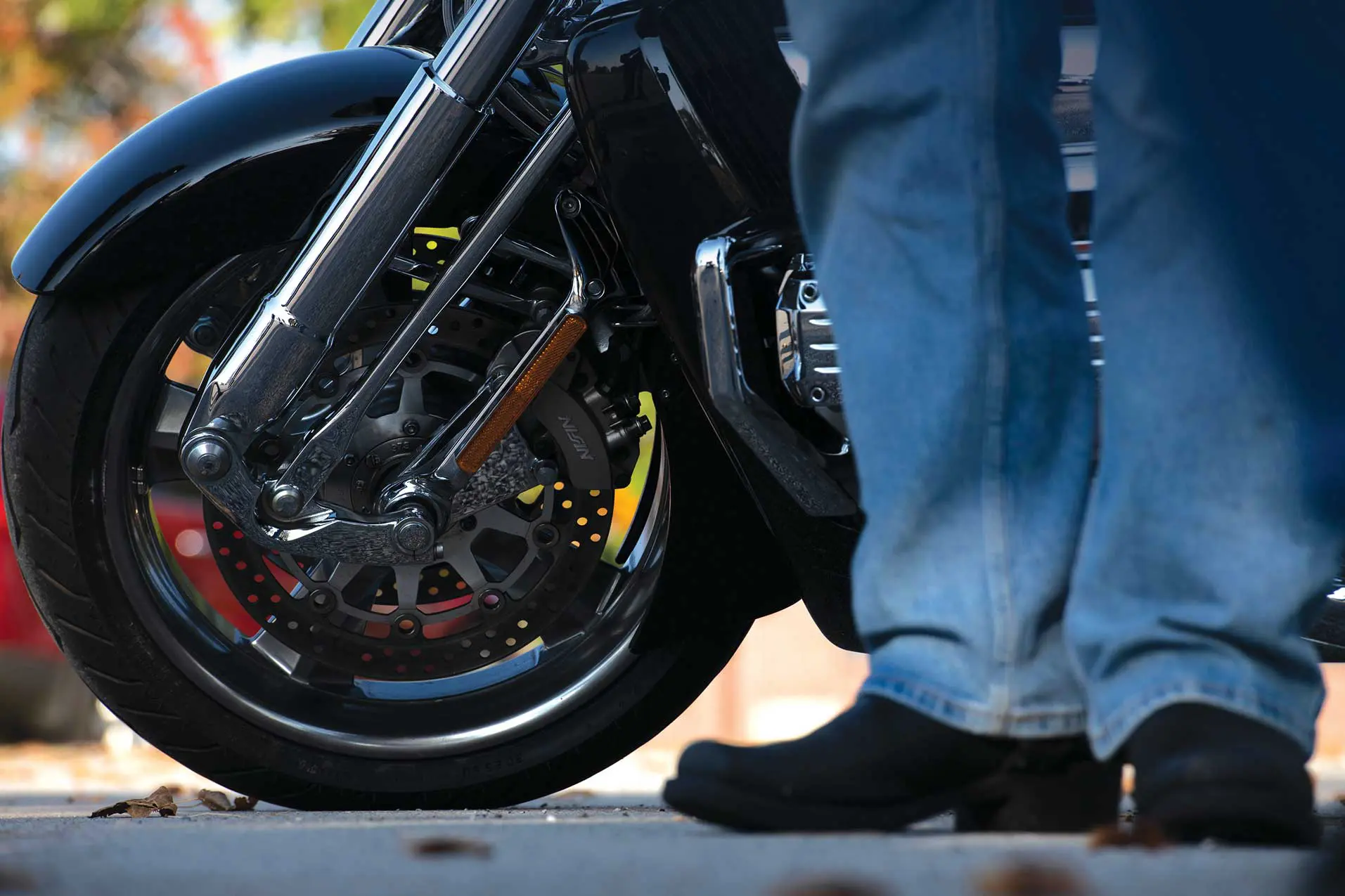Sometimes It Is Not “Like Riding a Bike”
By MS. LAUREN SCHATZ, STAFF WRITER
Jetting around on the open highway is a pastime shared by motorcyclists of all ages; however, this adventurous lifestyle can come to a painful end.
According to National Highway Traffic Safety Administration (NHTSA) data, the top two age groups involved in motorcycle fatalities are those younger than 30 and older than 40.1
What is the similarity between these two groups? The common denominator is their overconfident attitude in which they approach motorcycle safety. Staying safe while riding a motorcycle is an ongoing endeavor, and riders must be vigilant. The following are a few ways to stay on top of things—sometimes literally.
TAKE A MOTORCYCLE SAFETY COURSE
Whether it is for beginners or a refresher for those “re-entry†riders— those who took a long break from motorcycle riding—a motorcycle safety course (mandatory for active duty Airmen) can help all riders be better equipped for roadway hazards, as well as stay informed on traffic laws, which NHTSA states is a key step in safe motorcycle riding. Your base safety office can connect you to an appropriate training program that fits your schedule. According to GEICO, “Forty-seven states currently use the curriculum developed by the nonprofit Motorcycle Safety Foundation, an organization dedicated to rider education and safety training. Typically, this course involves 5 hours of classroom instruction and at least two riding sessions, usually totaling 10 hours.â€2
OBTAIN OR RENEW A MOTORCYCLE LICENSE
Taking a motorcycle course is often the first step to obtaining or renewing a motorcycle license, which is typically a necessity. According to NADAguides, “There are rare concessions to the rule, but generally speaking, in most of the United States you must possess a current and valid motorcycle license to ride a motorcycle if you are registering one and plan to ride it.â€3
CONDUCT SAFETY TESTS AND MAINTAIN YOUR BIKE
Whether it is your first bike or an old one that you are pulling out of storage, it is important to give the bike a once-over. Best Motorcycle GPS Guide recommends adjusting the throttle cable, checking the air intakes for leaks, checking the spark plugs in the ignition system, looking at the air pressure and condition of the tires, and inspecting the sprockets and chains for missing teeth or rust.4 Up-to-date gear is important too. Young adults may not have the funds to secure the proper helmet, clothing, and boots for safe riding, and older adults may pull out their older and less safe gear for a ride.
SHOP SMART
Modern motorcycles often have much more power and speed than older ones, and they may handle differently in general. Both young and re-entry riders stepping onto a dealership lot may find themselves behind the handlebars of a much different machine than they are used to riding. It is important to recognize those differences and treat all motorcycles like the powerful and fast machines that they are.
CHECK YOUR SPEED
What are the speeding risks? All riders face the same risks; the difference in those two groups of riders, once again, is attitude. Whether you are young and like to take risks or an older adult who underestimates the power of a new bike, you may be prone to speeding. According to the Insurance Institute for Highway Safety, 48 percent of motorcycle fatalities in 2010 involved speeding.5
NEVER DRINK AND RIDE
Alcohol was a factor in 42 percent of motorcycle fatalities in 2010, according to the same data.6 Young riders who may have recently reached the legal age to drink alcohol, but do not yet have the experience of knowing how it affects their body and judgment are most at risk, as are older adults who may have a decreased tolerance for alcohol, but who feel confident riding because “they have done it for years.â€
Whether you are a novice or a veteran motorcycle rider, prioritizing safety while riding is really a no-brainer; the consequences of overconfidence can be deadly. Approach motorcycle safety with a willingness to continue learning and an appreciation for safety, and you will be able to enjoy riding that bike for many years to come.
1 Insurance Institute for Highway Safety, Highway Loss Data Institute. n.d. “Fatality Facts 2019: Motorcycles and ATVs.†Arlington, VA: Insurance Institute for Highway Safety, Highway Loss Data Institute. https://www.iihs.org/topics/ fatality-statistics/detail/motorcycles-and-atvs.
2 Yarm, Mark. n.d. “How To Get a Motorcycle License.†Chevy Chase, MD: GEICO. https://www.geico.com/living/driving/ cycle/motorcycle-license/.
3 National Automobile Dealers Association (NADA). n.d. “Can You Register a Motorcycle Without a License? Find Out!†NADAguides. Tysons, VA: NADA. https:// www.nadaguides.com/Motorcycles/shopping-guides/ can-you-register-a-motorcycle-without-a-license.
4 Goldman, Lucy. n.d. “Motorcycle Maintenance Tips for Safe and Trouble-Free Riding.†Best Motorcycle GPS Guide. Blog. Tysons, VA: NADA. https://www.bestmotorcyclegpsguide.net/motorcycle-maintenance-tips-safe-trouble-free-riding/.
5 Safety 1st Driving School. n.d. “9 Motorcycle Safety Tips for New Drivers.†Irvine, CA: Safety 1st Driving School. https://safety1stdriversed.com/2015/06/9-motorcycle-safety-tips-for-new-drivers/. 6 Safety 1st Driving School, “9 Motorcycle Safety Tips.â€
6 Safety 1st Driving School, “9 Motorcycle Safety Tips.â€


